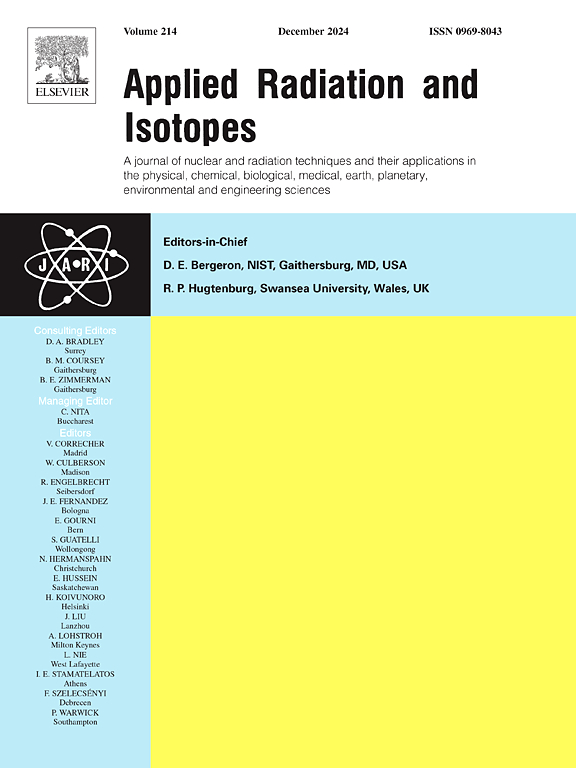Investigating solid-state reactions in UAl2-Al dispersions for Mo-99 target fabrication
IF 1.6
3区 工程技术
Q3 CHEMISTRY, INORGANIC & NUCLEAR
引用次数: 0
Abstract
Molybdenum-99 (Mo-99), the parent isotope of the widely used medical radioisotope technetium-99m (Tc-99m), is primarily produced via neutron irradiation of uranium-containing targets in research reactors. UAl2-Al dispersions, with UAl2 particles embedded in an aluminum matrix, are commonly employed for target fabrication. This study employs a new method for investigating the solid-state reactions between UAl2 and the Al matrix during target fabrication using stepwise isothermal dilatometry (SID). The study focuses on the formation of UAl3 and UAl4, which are less dense than UAl2 and result in material expansion detected by the linear displacement, which relates to reaction conversion. By analyzing the linear expansion data from 560 °C to 630 °C, SID determines apparent activation energies and identifies the D2 diffusion rate model as the best fit, indicating a fast reaction rate along the UAl2/Al interfaces and highlighting the crucial role of interface diffusion in the process. This information is crucial for optimizing target fabrication and controlling the final composition of Mo-99 targets.

求助全文
约1分钟内获得全文
求助全文
来源期刊

Applied Radiation and Isotopes
工程技术-核科学技术
CiteScore
3.00
自引率
12.50%
发文量
406
审稿时长
13.5 months
期刊介绍:
Applied Radiation and Isotopes provides a high quality medium for the publication of substantial, original and scientific and technological papers on the development and peaceful application of nuclear, radiation and radionuclide techniques in chemistry, physics, biochemistry, biology, medicine, security, engineering and in the earth, planetary and environmental sciences, all including dosimetry. Nuclear techniques are defined in the broadest sense and both experimental and theoretical papers are welcome. They include the development and use of α- and β-particles, X-rays and γ-rays, neutrons and other nuclear particles and radiations from all sources, including radionuclides, synchrotron sources, cyclotrons and reactors and from the natural environment.
The journal aims to publish papers with significance to an international audience, containing substantial novelty and scientific impact. The Editors reserve the rights to reject, with or without external review, papers that do not meet these criteria.
Papers dealing with radiation processing, i.e., where radiation is used to bring about a biological, chemical or physical change in a material, should be directed to our sister journal Radiation Physics and Chemistry.
 求助内容:
求助内容: 应助结果提醒方式:
应助结果提醒方式:


